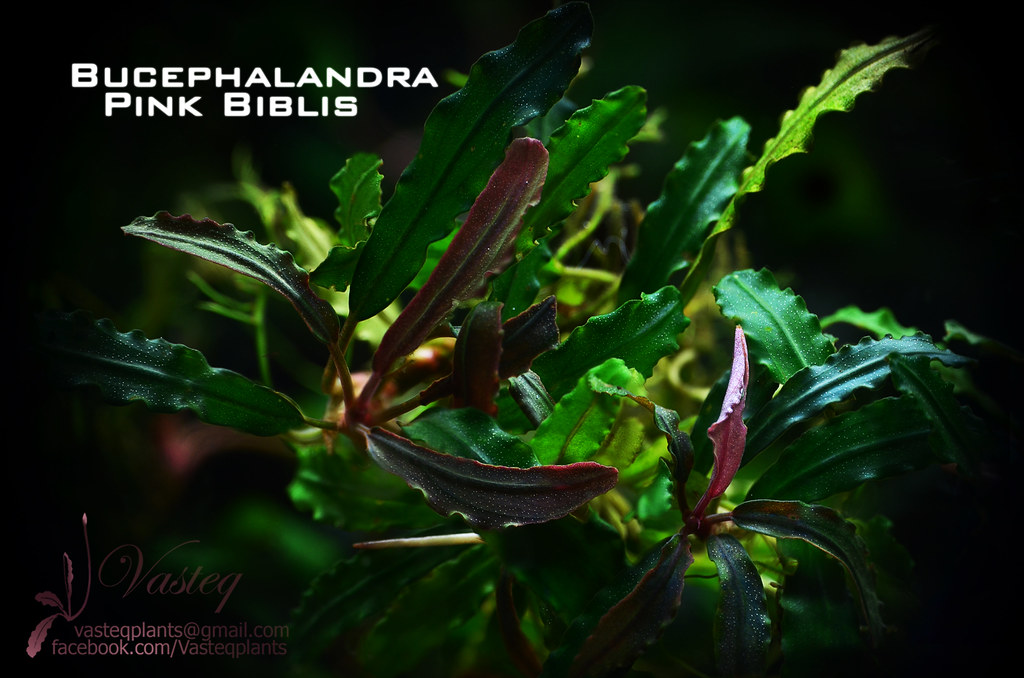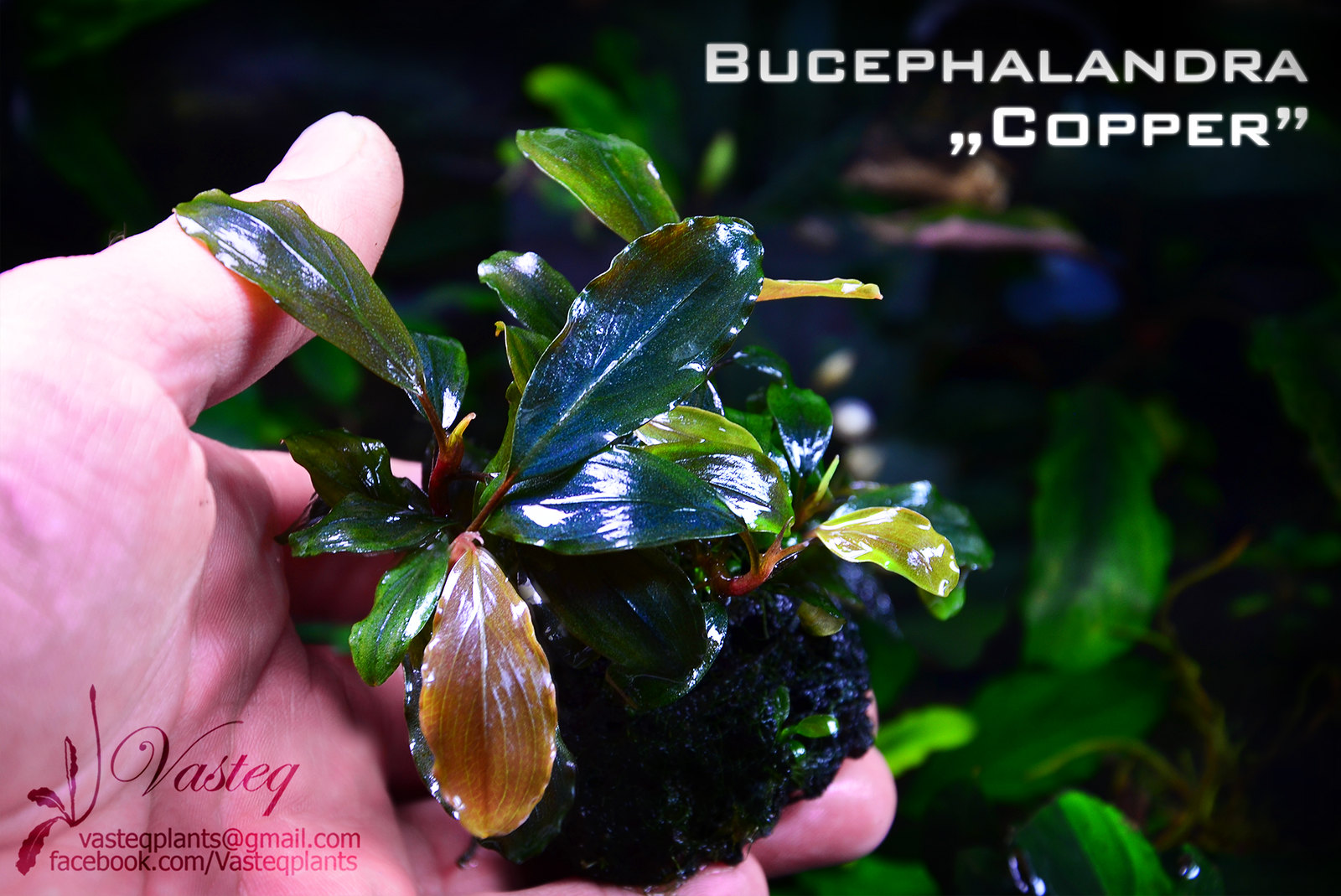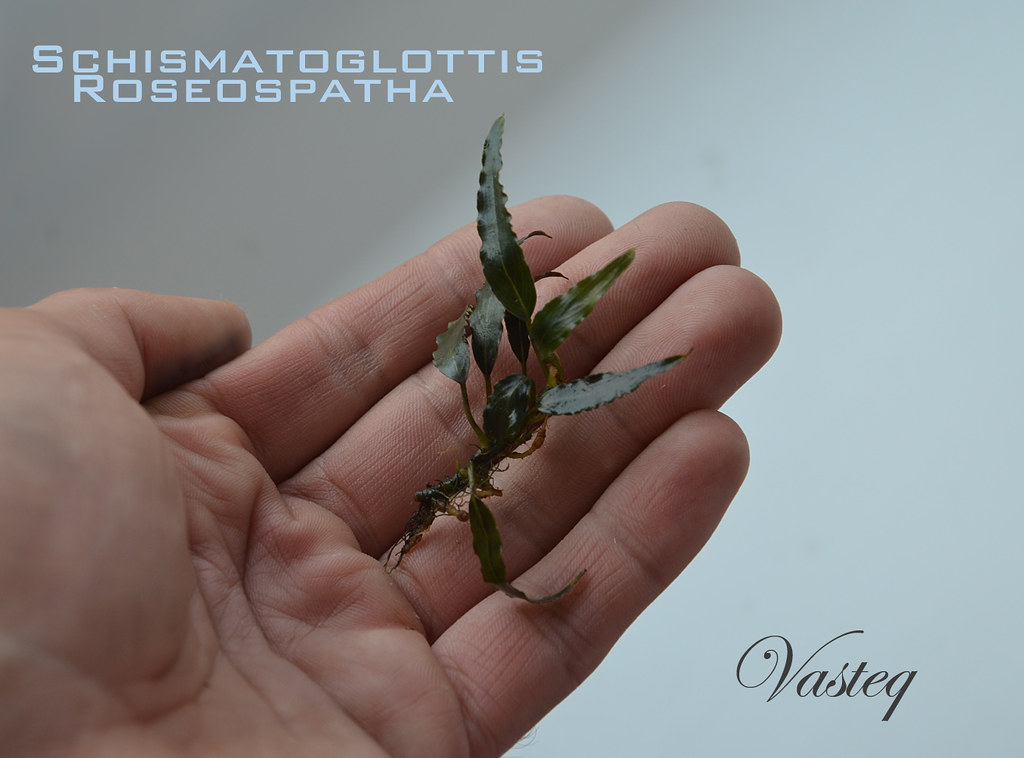Other alternative names: Skeleton King, Dark Skeleton King
The Achilles is probably the biggest Bucephalandra. It's characteristic feature is a highly visible vein of the leaf (more visible in the emers form).
There are two varieties - green and blue (dark blue).
GREEN ACHILLES is smaller than the Dark. The emers form has green leaves but submersed leaves show blue accents.

DARK ACHILLES is bigger and the leaves are blue or deep blue. Young leaves are reddish.

Achilles flowers are white, but there are also reported varietes with pink flowers. Achilles stems grow vertically so multiplication is done through separation young seedlings appear on thick stems. It is not a creeping specimen like Gaia, Silver Powder or Aegis.
Size comparision:
 TIPS:
TIPS: I have observed that in the case of a larger amount of iron in water, Achilles gets pink pigment, and it is also visible in the back side of the leaf.

 New leaves are reddish, darken with time and get bright green colour. Old leaves are dark green and have got well visible blue tint.
New leaves are reddish, darken with time and get bright green colour. Old leaves are dark green and have got well visible blue tint. Kualakuayan 2 often flourishes in my tank, sometimes creating a few flowers within a single parent plant.
Kualakuayan 2 often flourishes in my tank, sometimes creating a few flowers within a single parent plant.
















































